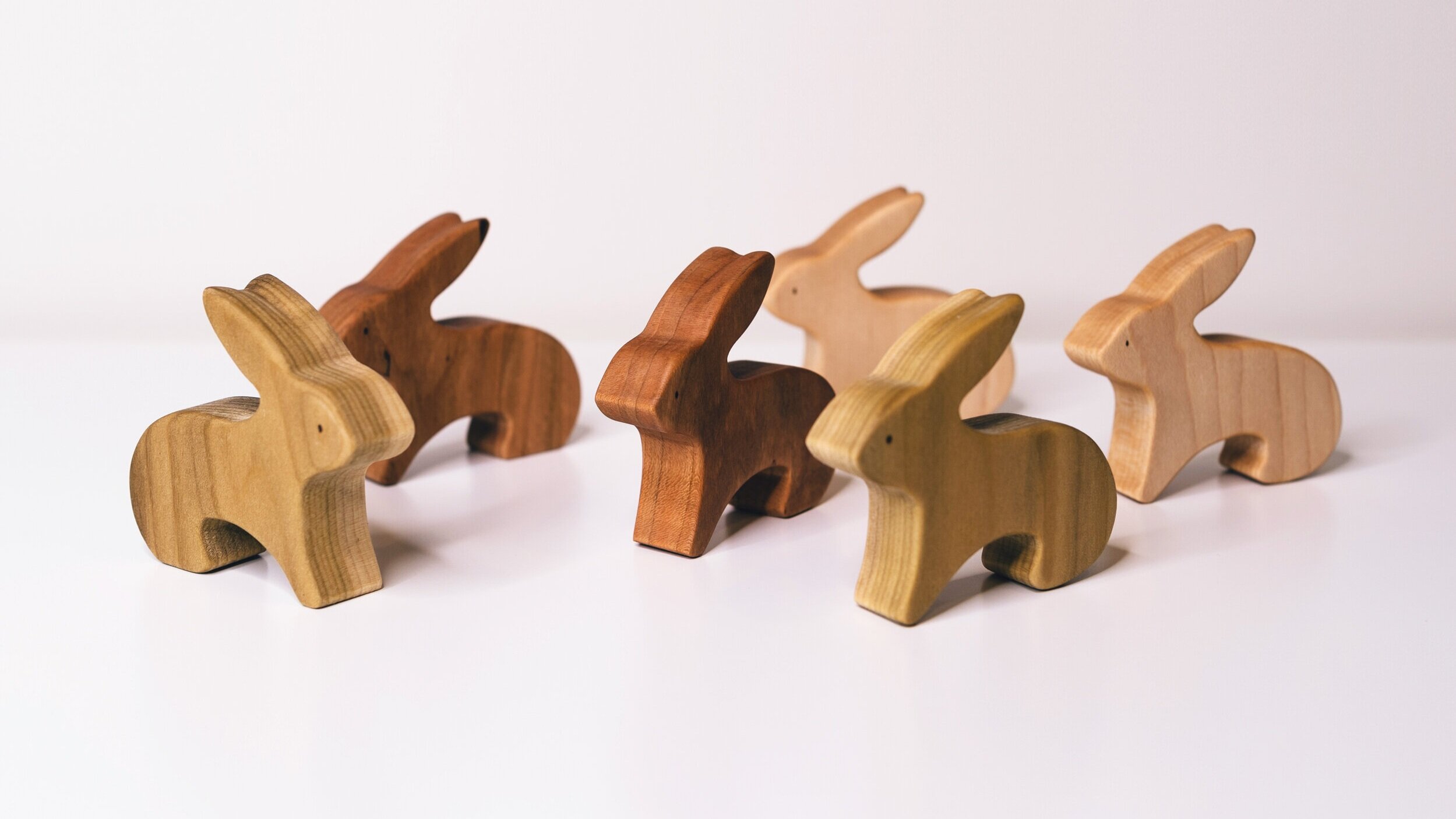Avoid these four kinds of wood for babies
Babies put everything in their mouths. This is normal and helps your little one build their immune system. During the world-is-my-binky stage, it's best to stay away from wooden toys made from these high-risk wood.
Walnut, The Controversial Wood
This dark wood is known for its beauty and has been used for centuries to make furniture. However, it contains a substance called juglone which is toxic to some plants and has been known to kill horses and other animals. Juglone poses little risk for adults, but it is unknown how much is safe for smaller bodies - particularly ones that put the wood in their mouth.
Alternative: Cherry - This dark rose-coloured wood is gorgeous and non-toxic.
Rubberwood, The Mystery Wood
Rubberwood is used in Plan and Melissa and Doug toys and is advertised as sustainable. It's relatively new, and there is little data on the wood's safety. This is what we do know. The anatomy of rubberwood is different, and it lacks the porosity that makes wood naturally antibacterial. It's tropical, and tropical wood has more extractives (greater potential to be toxic), as much two times as compared to other woods.
Alternative: Maple - This honey-coloured wood is exceptionally durable, which makes it ideal for teething babies.
Purpleheart, The Siren Wood
Purple is a colour that rarely occurs in nature, so it's not surprising that many people are drawn to purpleheart wood. However, this stunning wood has been known to cause skin and eye irritation with repeated handling. Not to mention that wood darkens over time, and that beautiful purple will eventually fade to brown.
Alternative: Oak - Highly durable, non-toxic, and comes in several hues from white to red.
Cedar, The Fragrant Wood
Cedar is known for its aromatic qualities. The distinctive earthy smell is an excellent natural repellent for bugs and rodents. The aroma, however, is toxic and not safe while indoors. Fun fact, the western red cedar tree is immortal (almost) - with the oldest red cedars living well over 1,000 years!
Alternative: Poplar, beech, and birch. All three are great options for baby toys.
There you have it, and while this is not an exhaustive list (no one said taking care of babies was easy), keeping to low-risk woods like maple, cherry, birch, oak, and poplar will help keep your baby safe from wood irritants. At Alex & Cora, we take wood safety a step further. Here's our never list - 3 things you'll never see in our wooden baby toys.
Never harsh chemicals: We don't use wood finishes with heavy metal driers and harsh chemicals. Our toys are protected using plant-derived oils and waxes.
Never Acrylic: Acrylic paint is made from a synthetic resin binder, basically liquid plastic! Our toys are painted using VOC-free milk paint or food-safe stains.
Never half measures: We never sell toys that fail our quality assurance testing. Before each toy makes it to the store, it's played with by our children, dropped 5-feet on concrete, and measured carefully for choking hazard.
Sources:
The Essential Wood Book by Tim Snyder

